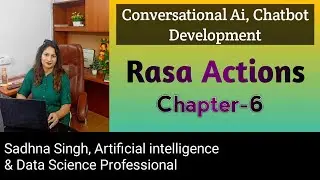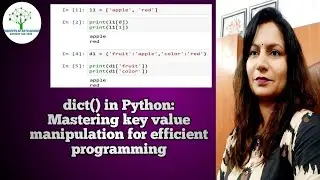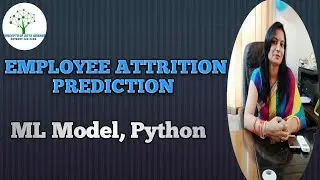Complete RoadMap Of Data Science | Learn Data Science Step By Step | Data Analytics | ML AI
Welcome to the world of data science! Here's a suggested path that you can follow to learn data science:
1. Learn Python programming language: Programming languages play a crucial role in Data Science as they provide the tools and frameworks necessary for data manipulation, analysis, modeling, and visualization. Python is widely considered language for Data Science. It has a rich ecosystem of libraries and frameworks specifically designed for data analysis and machine learning, such as NumPy, Pandas, Matplotlib, scikit-learn, TensorFlow, and PyTorch. Python's simplicity, readability, and vast community support make it an excellent choice for beginners and experienced practitioners alike.
2. Learn statistics: Statistics plays a fundamental role in Data Science. It provides the necessary tools and techniques to analyze and interpret data, make informed decisions, and draw meaningful insights.
3. Learn Data Analysis: Learn how to use Python libraries such as Pandas and Numpy to manipulate data. Data cleaning and preprocessing are crucial steps in Data Science. Pandas offers functions to handle missing values, duplicate data, and outliers. It allows you to perform data imputation, normalization, scaling, and encoding categorical variables, making your data ready for analysis and modeling. Pandas provides a wide range of functions and methods for data manipulation tasks. You can filter, sort, reshape, merge, and group data, as well as handle missing data, apply functions to data, and perform various transformations.
4. Learn Data Visualization: Visualization aids in exploring and understanding the data. It allows you to quickly identify patterns, outliers, and relationships within the dataset. By creating visualizations like scatter plots, histograms, and box plots, you can gain valuable insights into the data distribution and characteristics. You can start with python library matplotlib, seaborn then learn how to use tools such as Tableau, D3.js or Plotly to create visualizations of data.
5. Learn Machine Learning: Machine learning is one of the most important aspects of data science. Machine Learning is a critical component of Data Science. Learn different Machine Learning algorithms, including supervised and unsupervised, and explore how to train, validate and tune models. Get hands-on experience with machine learning libraries like Scikit-learn and TensorFlow.
6. Practice on Real-World Projects: To build your skills and gain practical experience, you can work on real-world projects that require data analysis, machine learning, or other data science skills. Practice projects provide an opportunity to apply the knowledge and skills you have learned in a real-world context. It allows you to work with actual datasets, explore different techniques, and implement the concepts you have learned in a hands-on manner. This practical experience is crucial for solidifying your understanding and building confidence in your abilities.
I hope this path helps you in your data science journey. Remember, learning data science is a continuous process, so never stop learning and practicing! Good luck!
Anybody Can Code
core python
/ watch
v=mw4FFbQuQKo&list=PLj835rCQzWioGKfzi7aJhZHnQXNGeNaL_
numpy
• Numpy Class-1 | Creating | Indexing |...
Pandas
• Pandas-1 | Python Programming | Panda...
Machine Learning
• How Do You Describe Data Science Proj...
Projects
• Analytics With Pandas | Python Data A...
EDA
• Prediction Of Employee Attrition | Ml...































